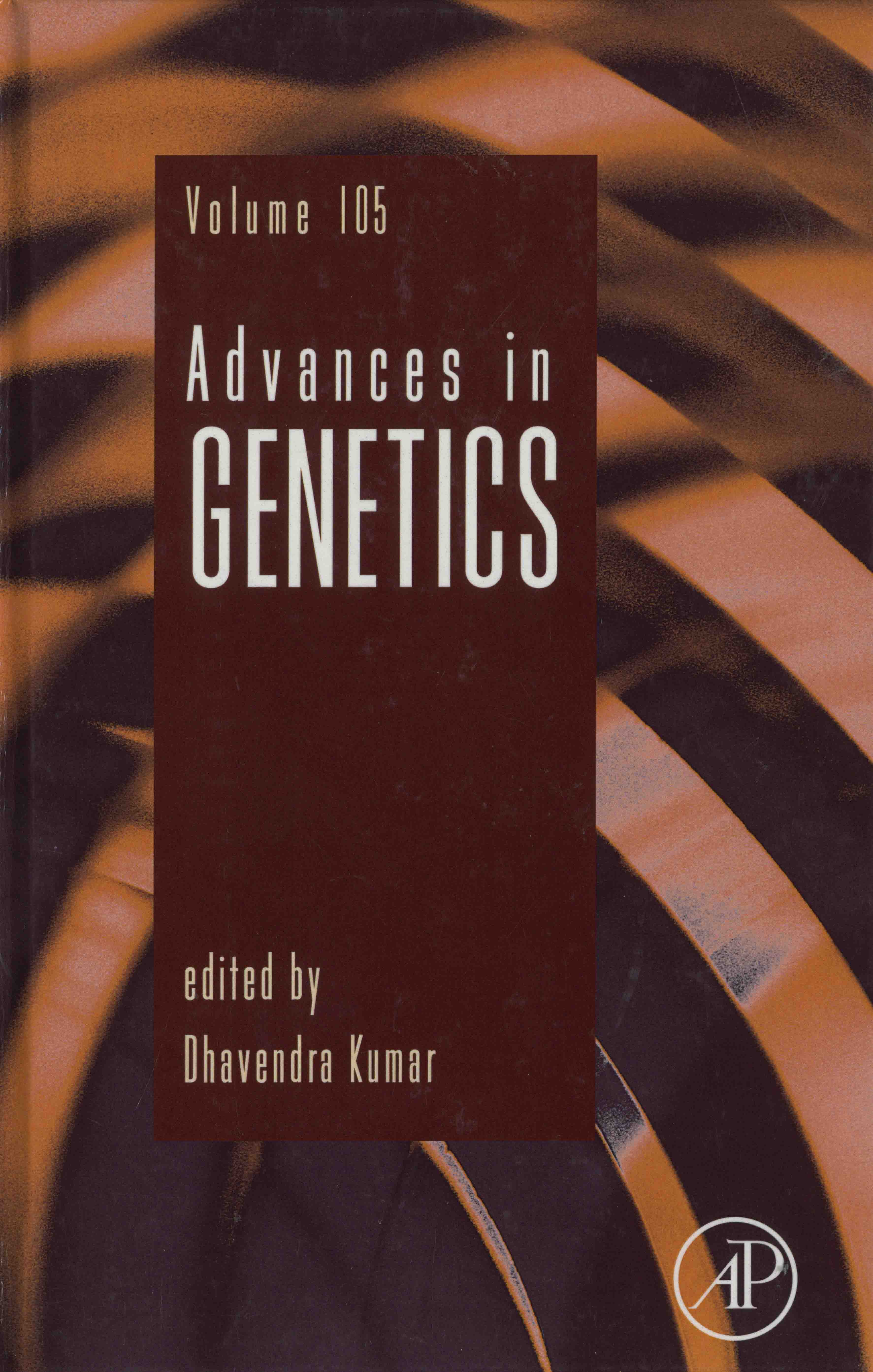 |
Advances in genetics. Volume 105 / edited by Dhavendra Kumar. -- Cambridge, MA : Academic Press, 2020. – (58.14/A244/v.105) |
Contents
Contributors
Preface
1. Pathogen and host genetics underpinning cryptococcal disease
1. Introduction
2. Cryptococcus spp. genetics and genomics
3. Cryptococcosis
Acknowledgments
References
2. Role of RNA-interacting proteins in modulating plant-microbe interactions
1. Introduction
2. Crossing barriers: HIGS into action
3. RNA-interacting proteins at the verge of plant-pathogen interaction
4. RNA chaperone-sRNA interplay in host-microbe interaction
5. Pathogenic sRNAs to impede host defense
6. sRNAs on the move: Mechanistic insights into cross-kingdom sRNA movement
7. Concluding remarks
Acknowledgments
References
3. FMRP ribonucleoprotein complexes and RNA homeostasis
1. Introduction
2. FMR1-associated clinical conditions
3. FMRP is a synaptic regulator
4. FMRP in ribonucleoprotein (RNP) complexes
5. Concluding remarks
Acknowledgments
References
4. "Electrifying dysmorphology": Potassium channelopathies causing dysmorphic syndromes
1. Introduction
2. Potassium channel structure and function
3. Andersen-Tawil syndrome
4. Bauer-Tartaglia (FHEIG) syndrome
5. Birk-Barel syndrome (BBS)
6. Canto syndrome
7. Keppen-Lubinsky syndrome (KLS)
8. Temple-Baraitser syndrome O-BS)
9. Zimmermann-Laband syndrome (ZLS)
10. Conclusions
Acknowledgments
References
5. Recent advances in oomycete genomics
1. The oomycetes
2. Oomycete genomes
3. Oomycete phylogenomics
4. Oomycete mitochondrial genomes
5. The impact of horizontal gene transfer on oomycete evolution
6. Genome mining for oomycete effectors
7. Oomycete OMICS studies
8. Tools for oomycete genomics
9. Oomycetes in the post-genomic era
10. Conclusions and future outlook
Acknowledgments
References
6. Antibiotic drug discovery: Challenges and perspectives in the light of emerging antibiotic resistance
1. Introduction
2. History of novel antibiotic discovery
3. Metabolite biosynthesizing microbes
4. Antibiotics classification and their mode of actions
5. Antibiotic resistance and evolution of superbugs
6. Problem of antimicrobial resistance
7. Foundation of antibiotic era
8. Qualities to qualify as an antibiotic
9. Antibiotics developmental pipeline and causes of discovery void
10. Maintenance of antibiotics pipeline
11. Metabolites detection
12. Metabolites profiling
13. Characteristics of versatile surrogate chassis hosts
14. Silent/cryptic gene clusters, their roles and significance
15. Secondary metabolic cluster (presence of biosynthetic, resistance and transporters)
16. Complex cascade regulation of antibiotic biosynthesis in actinomycetes (Nikkomycin biosynthetic cluster as an example)
17. Classical approaches for detection of novel antibiotics
18. Bioactivity analysis of novel antimicrobial compounds
19. Strategies for prediction, analysis and activation of BGC
20. Alternative approaches to conventional antibiotics
21. Perspectives, challenges and conclusions
References
7. Application of yeast to studying amyloid and prion diseases
1. Introduction
2. Overview of yeast prions
3. Yeast models for polyglutamine aggregation
4. Yeast models for aggregation of (z-synuclein, associated with Parkinson's disease (PD)
5. Yeast models for amyloid proteins associated with Alzheimer's disease (AD) and tauopathies
6. Yeast models for aggregation of mammalian prion protein (PrP)
7. Yeast models for proteins associated with amyotrophic lateral sclerosis (ALS)
8. Aggregation of transthyretin in yeast
9. Yeast assay for amyloid nucleation by mammalian proteins
10. Conclusions and future directions
Acknowledgments
References